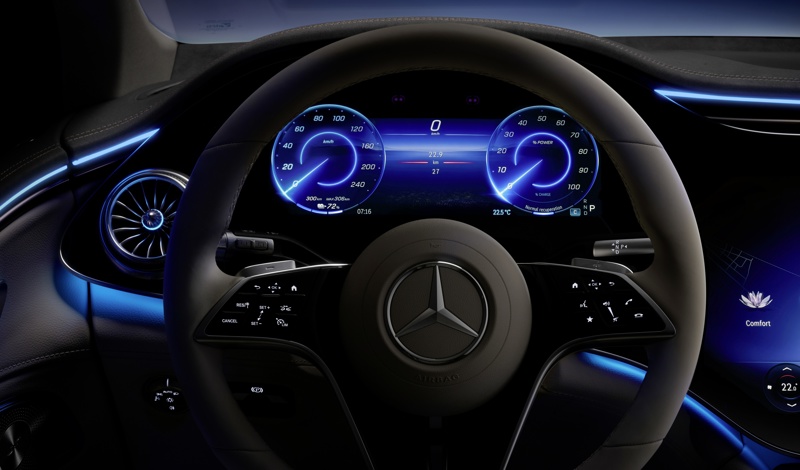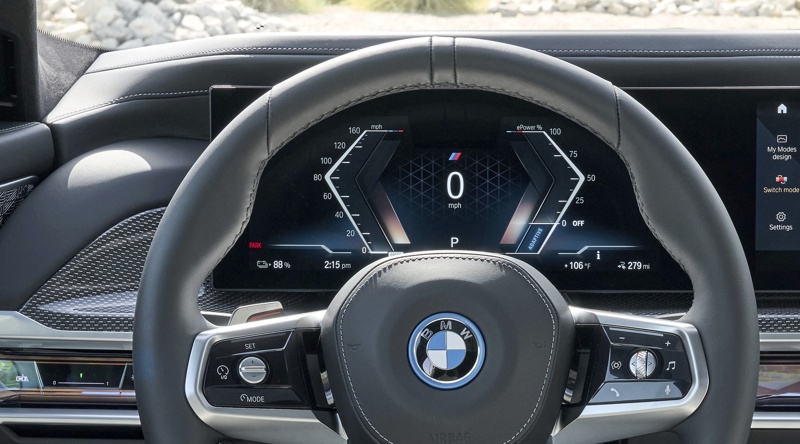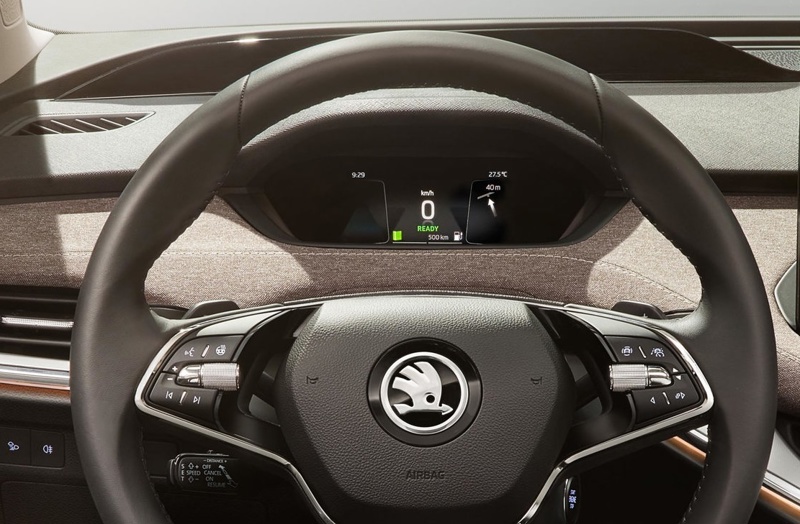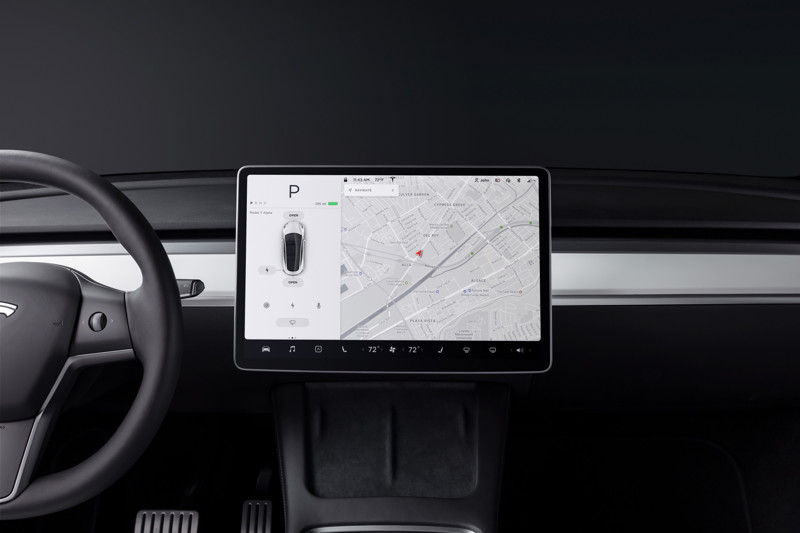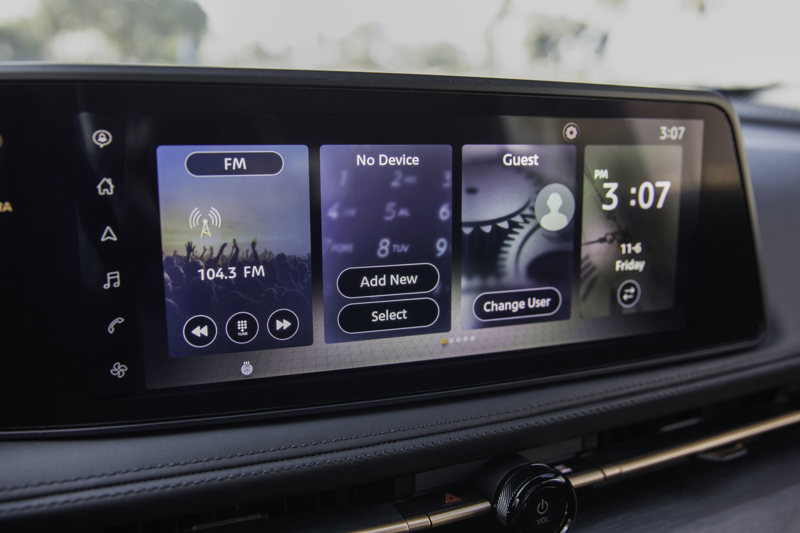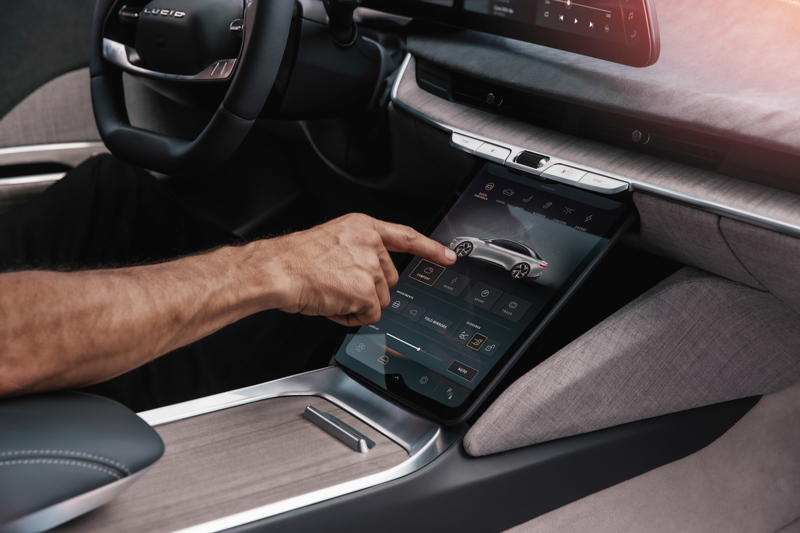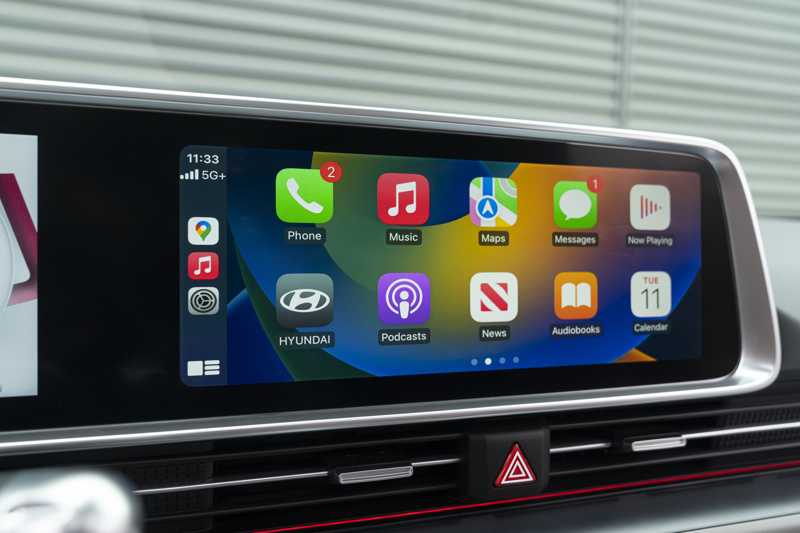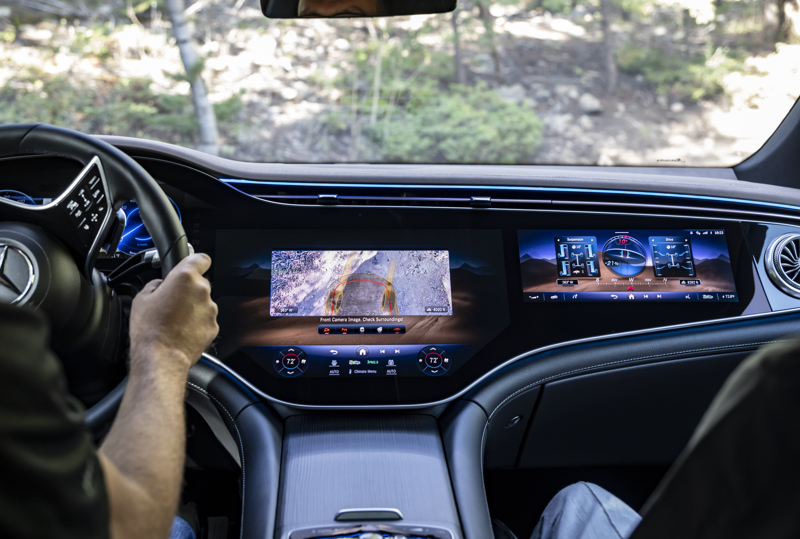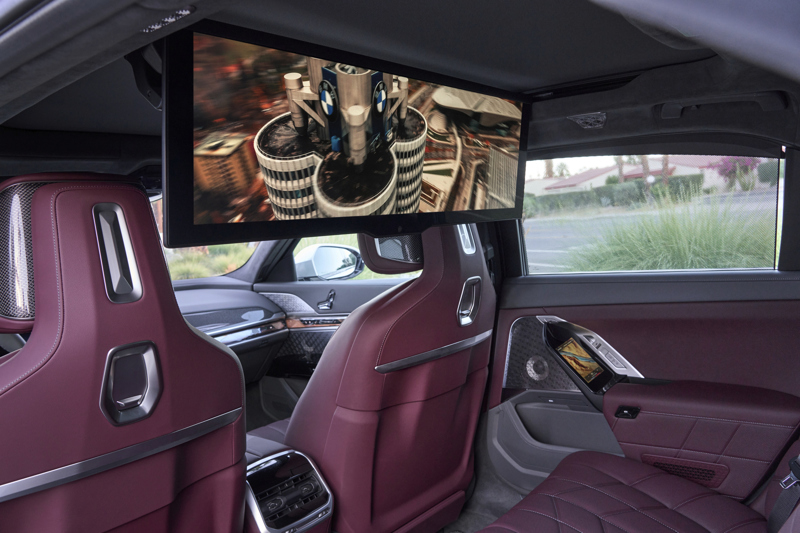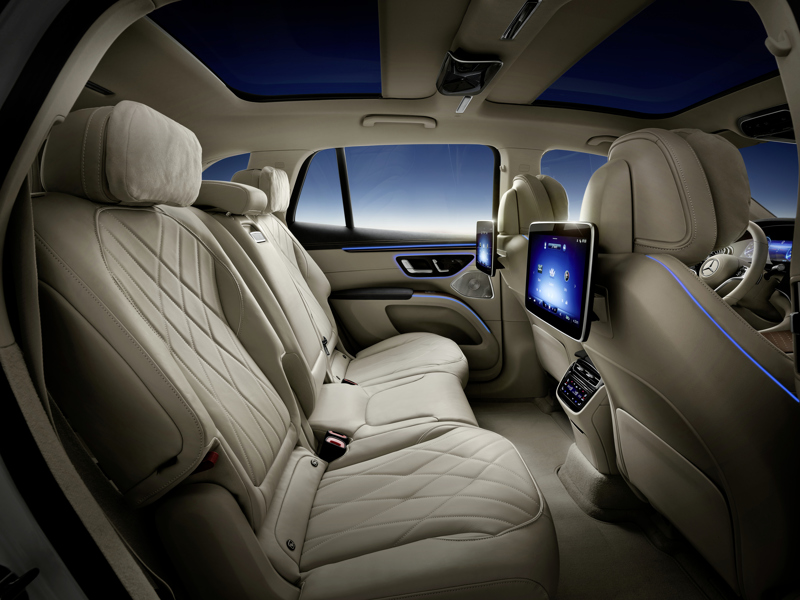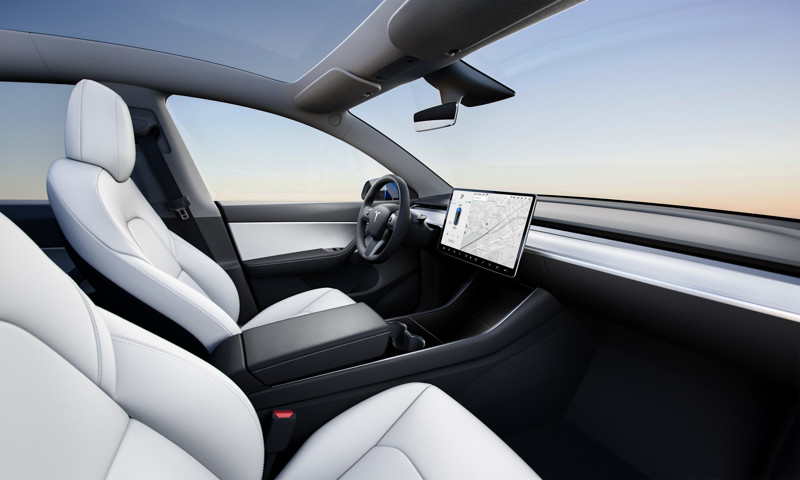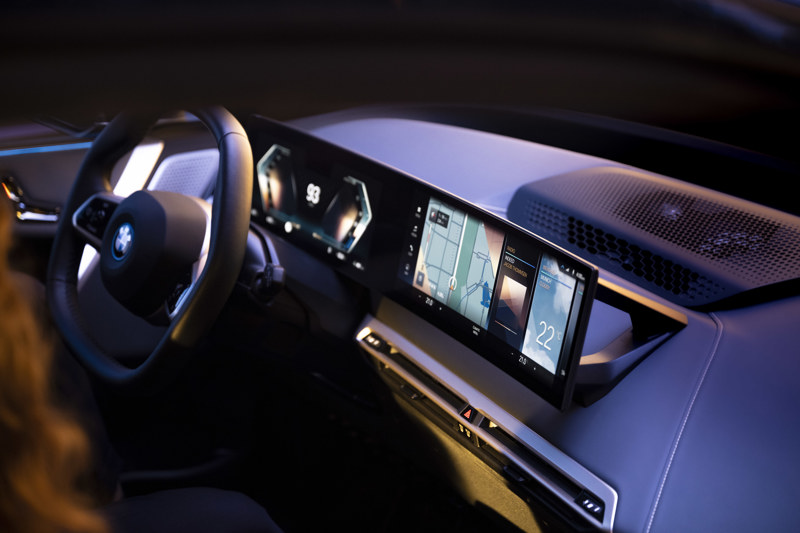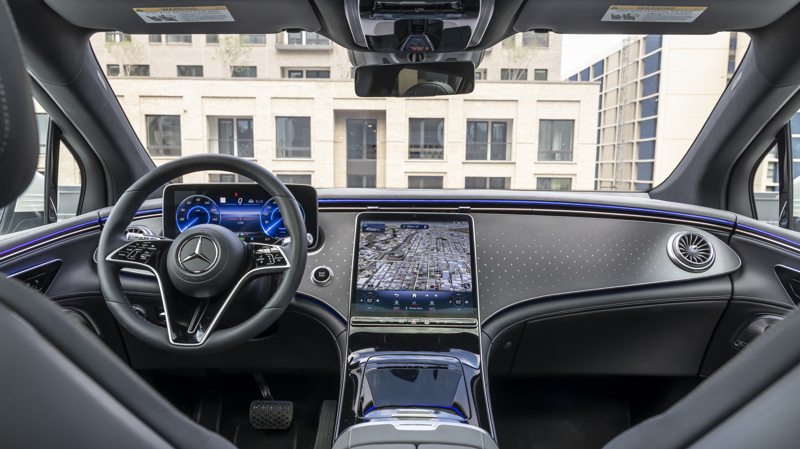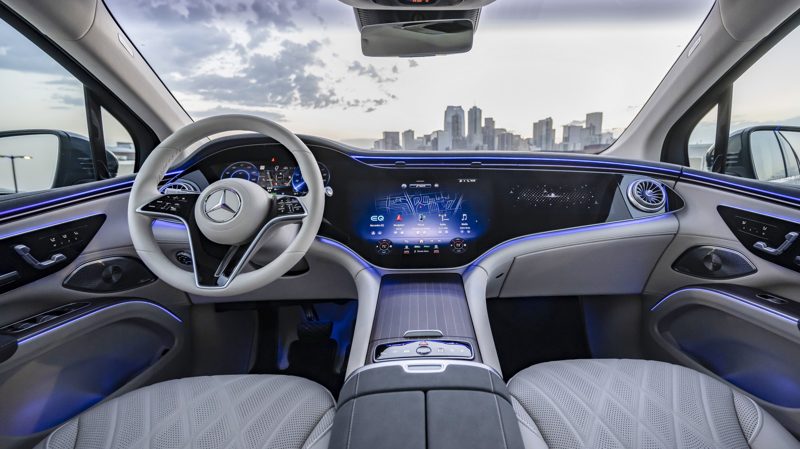Screens
The screens are one of the modern EVs' most noticeable user interface aspects. These displays range from small screens displaying basic information to large touchscreens that take up most of the dashboard.
The screens display various information, including battery levels, charging status, navigation, media, etc. The size and layout of the screens can vary from one model to another, but they all make the driver’s experience more intuitive and user-friendly.
Screen types
We categorize the screens into different types and features. They are:
Digital instruments
Many cars now feature digital instrument clusters, or driver information displays replacing analog gauges.
These digital screens typically provide information such as speed, battery level, odometer, trip information, and navigation directions.
Some models also let the driver customize the display to choose what information is displayed and how. The screen size and functionality vary.
Below you see some examples from different models.
Mercedes EQS-Suv Digital Instrument
BMW i7 Digital Instrument
Skoda Enyaq Digital Instrument
Infotainment screen
The infotainment system is a central screen that combines various multimedia functions in one place. It typically includes a touchscreen interface that allows drivers and passengers to control features such as navigation, audio and video playback, phone connectivity, climate control, and other vehicle settings. In addition, infotainment systems are becoming increasingly sophisticated, with features such as voice recognition, smartphone integration, and app compatibility.
The features the user can control from the car’s infotainment screen can vary depending on the vehicle’s make, model, trim level, and the specific infotainment system installed. However, here are some common features that are often accessible through the infotainment screen:
Audio and Media Control: From the infotainment screen, you typically can control various audio and media functions, such as changing radio stations, adjusting volume, selecting audio sources (e.g., AM/FM radio, satellite radio, Bluetooth audio streaming, USB media), browsing and selecting music tracks, and controlling audio settings like bass, treble, and equalizer settings.
Navigation and Maps: Many infotainment systems include built-in navigation functionality, allowing users to input destinations, view maps, get turn-by-turn directions, and adjust navigation settings. Some infotainment systems support real-time traffic information, points of interest (POI) search, and voice-guided navigation.
Phone Connectivity: Infotainment screens often provide phone connectivity options, allowing users to make and receive phone calls, access contacts, view call history, and send/receive text messages. Some systems also support phone book synchronization, call logs, and call management features. Most Infotainment systems also support Android Auto and Apple CarPlay.
Android Auto and Apple CarPlay are two popular smartphone integration systems that allow drivers to connect their mobile devices to their car’s infotainment system and access various features and apps while driving safely and conveniently.
They provide a way for drivers to interact with their smartphones while keeping their eyes on the road and hands on the wheel, minimizing distractions and promoting safer driving practices.
Android Auto and Apple CarPlay are designed to provide a safer and more convenient way for drivers to access their smartphone features while driving, with an interface optimized for use in a car and designed to minimize distractions.
Climate Control: Some vehicles integrate climate control into the infotainment screen, allowing users to adjust the temperature, fan speed, air distribution, and other HVAC functions directly from the screen. This control may include controls for front and rear seat climate settings if applicable.
Vehicle Settings: Infotainment screens may also provide access to various vehicle settings, such as lighting controls, door lock settings, seat adjustments, and other comfort and convenience features. Vehicle settings may also include customization options for driver preferences, vehicle profiles, and other personalization settings.
Rear View Camera and Parking Assistance: Many modern vehicles have cameras and parking assistance features, typically displayed on the infotainment screen. The screen allows users to view the rear surroundings of the vehicle and get assistance with parking and maneuvering.
Vehicle Diagnostics and Maintenance: Some infotainment systems provide access to vehicle diagnostics and maintenance information, such as tire pressure monitoring, engine oil life, vehicle health reports, and maintenance reminders.
Connectivity and Apps: Infotainment car screens may also provide connectivity options, such as Bluetooth pairing, Wi-Fi hotspot, and app integration. This functionality may allow users to connect their smartphones, use apps, and access online services directly from the infotainment screen.
It’s important to note that the availability and features of infotainment screens can vary greatly depending on the specific vehicle and infotainment system installed.
The infotainment screen size varies on the different models. Some models have two Infotainment screens. Typical is one screen at the center console’s lower part and one at the top of the center console. This split can improve usability.
Below are some real-world examples from models.
Tesla Model Y infotainment screen
Nissan Aryia infotainment screen
Lucid Air Infotainment screens
Hyundai Ionic 6 Infotainment screen showing Apple CarPlay
Climate control screen
Climate control screens, or HVAC (Heating, Ventilation, and Air Conditioning) screens, are screens in cars that control the vehicle’s climate settings. These screens are typically part of the car’s infotainment system or may be separate screens specifically designed for climate control.
Climate screens allow the driver and passengers to adjust various climate settings within the vehicle, such as temperature, fan speed, air distribution, and other HVAC functions. In addition, they may provide a visual interface that allows users to interact with the HVAC system through touchscreen controls, buttons, or knobs.
Some common features that may be available on climate screens in cars include:
Temperature Control: Climate screens allow users to set the desired temperature inside the vehicle. This control may be done through a digital temperature slider, up/down buttons, or other input methods.
Fan Speed Control: Users can adjust the HVAC system’s fan speed through the climate screen. This control allows them to control the airflow and the intensity of the heating or cooling inside the vehicle.
Air Distribution Control: Climate screens may also provide options to control the direction and intensity of the airflow, such as adjusting the vents’ position, mode (e.g., defrost, floor, dash, etc.), and air conditioning settings.
Auto Mode: Many climate screens have an “auto” mode that allows the HVAC system to adjust the temperature, fan speed, and air distribution based on the set preferences and the current conditions inside and outside the vehicle.
Rear Climate Control: In some vehicles, climate screens may also provide options for controlling the climate settings in the rear seats separately from the front. This control allows passengers in the back seats to control their comfort settings.
Seat Heating/Cooling: Some climate screens may also provide seat heating or cooling controls, allowing users to adjust the temperature of the seats for added comfort.
Audi Q8 e-tron climate screen front
Front Passenger screen
In most vehicles, the infotainment screen, typically located in the front center console, is primarily designed for the driver’s use. However, some modern cars may have a secondary screen or display dedicated to the front passenger. The functionality and purpose of this passenger-side screen can vary depending on the make, model, and trim level of the vehicle, and it may offer some or all of the following features:
Media Control: The passenger-side screen may allow the front passenger to control various media functions, such as changing radio stations, adjusting volume, selecting audio sources, and controlling audio settings like bass, treble, and equalizer.
It may also allow users to play movies and other media on this screen.
Seat Controls: The passenger-side screen may also provide controls for the front passenger to adjust their seat settings, such as seat heating, cooling, reclining, and massage features.
Navigation and Maps: Depending on the vehicle’s capabilities, the front passenger may be able to access navigation and map features on their side screen, including inputting destinations, viewing maps, and getting turn-by-turn directions. This feature can give the front passenger a visual aid for the trip and allow them to participate actively in the navigation process.
Vehicle Information: The front passenger-side screen may also display vehicle information such as fuel consumption, trip information, and vehicle diagnostics. This information can provide the front passenger with insights into the current status of the vehicle and its performance.
Connectivity and Apps: Some vehicles may allow the front passenger to connect their smartphones or other devices to the passenger-side screen, enabling them to access apps, media, and other content during the ride.
In the EVKX EV database, you can search for models with front passenger screens.
Mercedes EQS Suv front passenger screen
Rear Seat Infotainment
Rear seat infotainment screens provide entertainment options for passengers in the car’s back seats, particularly for long trips. These screens may be mounted on the back of the front seat headrests or integrated into the ceiling or center console of the car. They can provide access to video content, gaming, and other entertainment options, often with individual controls for each screen to allow passengers to customize their experience.
BMW i7 rear seat entertainment screen
Mercedes EQS-SUV rear seat entertainment screens
Most people use tablets for rear-seat entertainment.
Screen layouts and dashboard integration
The screen layout varies a lot between models. Some have large screens, while others have tiny screens.
Some models have optional screens or alternative layouts.
Regarding dashboard integration, some EV manufacturers integrate the screen into the dashboard, making it a clean and exclusive design.
Others save money and mount the screens on brackets on the dashboard or center console. As a buyer, you could expect this layout on budget models, but even more expensive models have cut corners with screen integration.
See the examples below.
The Tesla Model Y budget design has a single infotainment screen mounted on a bracket in the dashboard's center.
BMW iX with Digital Instrument Cluster and Infotainment screen mounted on a bracket on the dashboard.
Porsche Taycan with fully integrated screens
Mercedes EQS-SUV standard screen layout with only partial integrated screens
Mercedes EQS-SUV MBUX Hyperscreen layout with fully integrated
Most sold EVs globaly
Below, you find the top 10 most-sold EV models in the world. Click on the name for full info.
